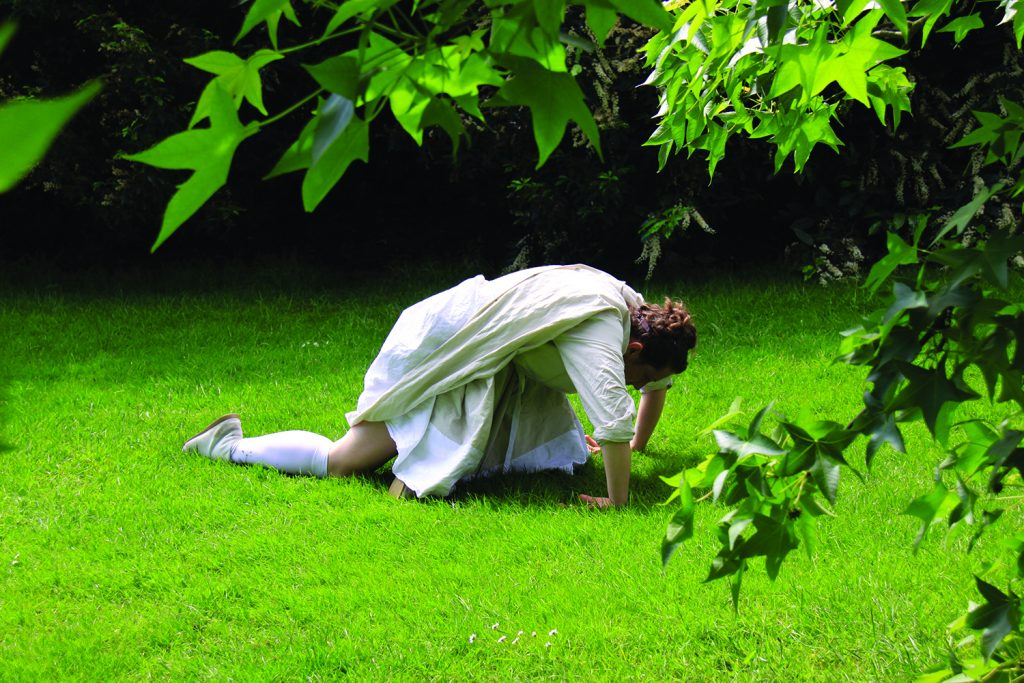Subcutaneous ‘Ha-has’ and the Evolution of Polymorphic Animalcules
Botanical Drift: Walking Kew Gardens
Subcutaneous ‘Ha-has’ and the Evolution of Polymorphic Animalcules is a field study of the ephemeral and chaotic nature of sensory and communicative organisms [1]. A creature performs field science inspired by the survival tactics of Victorian biologist and botanical artist Marianne North, while simultaneously engaging with a critical analysis of Charles Darwin’s theories on evolution and adaptation, specifically The Power of Movement in Plants (1880). Shaped by life-form observations of the micro and macro systems of the Kew Gardens context, a subsequent magnification of the contents becomes visible through movement. At times grotesque, this being is characterized by an active problem-solving behaviour as it is observed adapting to its environment. Between a watercolour and an oil painting this study is expressed through gesture.
[1] In landscape design a ha-ha is a recessed element that provides a vertical barrier without obstructing views while blocking livestock from wandering onto private land. The structure often includes a slope downwards that is arrested by a sharp vertical plane. The nature of the design creates unexpected discoveries, obscured or hidden from immediate view. This element of surprise prompted the name ha-ha, to describe the excitement experienced when the recessed wall suddenly becomes visible.
Credits
- Cinematographer: Claire Loussouarn
- Photographer: Takako Hesegawa
Exhibition History
-
Subcutaneous Polymorphic Animalcules2015Post-Otherness-Wedding
Berlin, DE -
Exotica ... and 4 other cases of the self2014Me Collectors Room
Berlin, DE -
Botanical Drift2011Kew Gardens
London, UK
Related Publication
-
2018Ed.: Khadija von Zinnenburg Carroll
Sternberg Press






